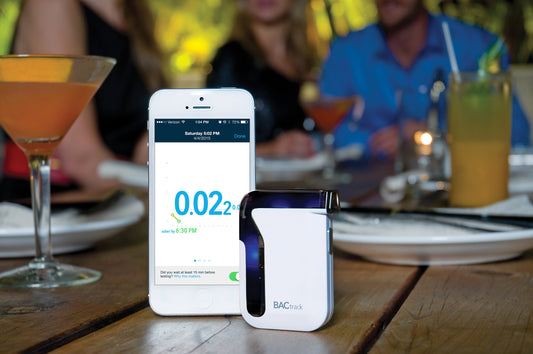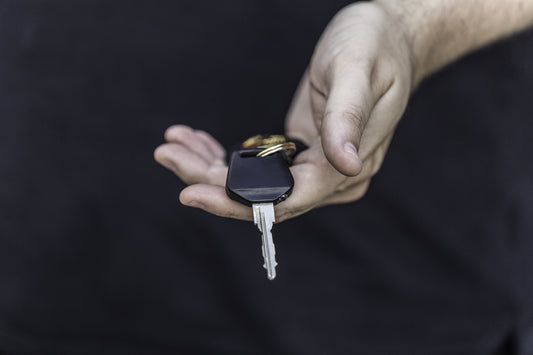The Most Dangerous Times on the Road
The Most Dangerous Times on the Road
The odds of getting into a driving accident increase during periods when there are more cars on the road, such as rush hour, or when driving conditions are less than optimal, as during periods of inclement weather. But when the number of alcohol impaired drivers increases, the odds skyrocket. Research into periods when motorists are most vulnerable to accidents involving alcohol-impaired drivers offers an instructive road map for avoiding those times when driving risks are the greatest.
According to National Highway Traffic Safety Administration (NHTSA), between 2001 and 2005, 36 fatalities occurred per day on average in the United States as a result of crashes involving an alcohol-impaired driver. At certain times of the year, such as summers and holidays, those numbers rose dramatically. During the Christmas period, for example, an average of 45 fatalities involving an alcohol-impaired driver occurred each day, and soared to 54 per day over the New Year’s holiday. All these numbers would almost certainly be lower if breathalyzer use were more widespread.
The summer season usually offers the best weather and driving conditions of the year – dry roads, excellent visibility, and longer daylight hours. But the seasonal benefits can be negated by other factors. According to the NHTSA, a higher volume of holiday travelers, including a significantly higher number of alcohol-impaired drivers, cause nearly twice the number of automotive deaths during summer months than during the rest of the year combined.
“100 Deadliest Days” for Teens
The period between Memorial Day and Labor Day – summer vacation for most students – has been called "The 100 Deadliest Days" for teen drivers. Nine of the 10 deadliest days for youth on U.S. highways fall between May and August. One reason is that teens are drinking are younger ages.
Nine of the 10 deadliest days for youth on U.S. highways fall between May and August.
According to the U.S. Department of Health and Human Services, an estimated 5.8% of teens ages 16 and 17, and 15.1% of 18 to 20 year olds reported driving under the influence of alcohol in 2010. The U.S. Department of Transportation found that a total of 3,115 teens ages 13-19 died in motor vehicle crashes that year, and about 2 out of 3 fatalities were males.
Too much free time and too little driving experience also risk for teenagers. In addition, they are more likely to engage in “distracted driving” behavior, which describes activities that can endanger the safety of drivers, passengers, and pedestrians. Examples of distracted driving include texting, using a cell phone, or grooming while driving a motor vehicle.
Most Dangerous Holidays
During the holidays, the number of travelers on our nation’s roads peaks as friends and family come together to celebrate. As a result of holiday parties and gatherings, more drivers are impaired by alcohol, too. Unfortunately, fatalities resulting from accidents involving alcohol-impaired drivers have become so predictable that many state highway patrol departments now issue fatality estimates, which usually prove to be all too accurate.
Lurking among the “100 Deadliest Days” of summer is the deadliest day of them all – the Fourth of July holiday. The IIHS studied deaths resulting from auto accidents from 2005 to 2009 and ranked the July 4 as the deadliest day of the year, with 144 driving-related fatalities on average. Teens accounted for nearly 10% of the fatalities.
The most traveled holiday period of the year is Thanksgiving weekend, and DUI arrests are at their highest between Thanksgiving and the end of New Year’s weekend. Thanksgiving Eve is even referred to as “Black Wednesday,” as it may be the busiest night of the year for bars. Social binge drinking (consumption of a high volume of alcohol in a short period of time) is also common at this time of year.
During the Christmas and New Year period, the average number of fatalities involving an alcohol-impaired driver rose 34%. This numbers would almost certainly be lower if breathalyzer use were more widespread.
The U.S. National Institute on Alcohol Abuse and Alcoholism (NIAAA) reports that 40% of traffic-related deaths during Christmas and New Year's involve drunk drivers -- a 12% increase over the rest of the month of December. According to the NHTSA, 2,597 people lost their lives due to motor vehicle traffic crashes during December 2010. The NHTSA also found that an average of 36 fatalities occurred each day in the U.S. 2001 and 2005 as a result of crashes involving an alcohol impaired driver. That number increased to 45 per day during the 3-day Christmas period and jumped to 54 per day over New Year’s holiday period.
Predictably, driving danger is higher than average during other holiday periods, too. According to the NHTSA, during Labor Day weekend in 2010, 147 people in the U.S. were killed as a result of drunk driving, which represented 36% of all highway fatalities during that period.
Other Dangerous Days and Times
The IIHS found that the second deadliest day after July 4 was September 2, followed by August 13, July 15, May 20, and November 11. Perhaps surprisingly, New Year's Eve ranked 7th, with 130 average fatalities.
IIHS also discovered that seven of the 25 deadliest days in the U.S. occurred during August, which made it the deadliest month on the road. September and July rank as the second and third deadliest months, according to the NHTSA, and March had the fewest auto fatalities.
Many of the deadliest days occur when people celebrate special occasions and events, such as Cinco de Mayo or the Super Bowl. For example, a NHTSA study found that alcohol-related crashes claimed a life every 51 minutes on St. Patrick’s Day in 2010, accounting for 32% of all fatalities that occurred that day.
The NHTSA reports that most accidents occur during "rush hour," between 3 p.m. and 6 p.m. And according to the NHTSA, Saturday is the most dangerous day of the week to drive, primarily because there are more cars – and more drunk drivers – on the road than any other day. According to the AAA Foundation for Traffic Safety, 31% of fatal drunk-driving accidents occur on the weekend, and the highest number of drunk drivers is on the road between midnight and 3 a.m. Fatal crashes are also four times higher at night than during the day.
Dangerous Days to Walk
While New Year’s Day might not be the most dangerous day to drive, it’s probably the most dangerous day to walk. According to a 2005 article in the journal Injury Prevention, more pedestrian deaths occur on New Year's Day than any other day, including Halloween.
Pedestrian deaths are also more likely to occur on Fridays, Saturdays, and Sundays, when nearly half (49%) of all pedestrian fatalities occurred. Alcohol involvement — for driver or pedestrian — was reported in nearly half of all traffic crashes resulting in pedestrian deaths. And in one-third of pedestrian fatalities, the pedestrian was intoxicated.
The most traveled holiday period of the year is Thanksgiving weekend. DUI arrests are at their highest between Thanksgiving and the end of New Year’s weekend.
In 2008, 69,000 pedestrians were injured in traffic crashes and 4,378 were killed, according to the CDC. One pedestrian was injured every eight minutes and one was killed every two hours. Thirty-eight percent pedestrian fatalities for those under age 16 occurred between 3 p.m. and 7 p.m.
Your Deadliest Days to Drive
It’s easy to calculate your own Most Dangerous Days to Drive. Anytime you consume alcohol and drive, you increase your risk of being in a car accident. Highway patrol departments are more familiar with the data than you. If you plan to drink during periods when driving dangers are elevated, be aware that the highway patrol is on alert, and that are determined to get intoxicated drivers off the highways.
Shop for BACtrack Breathalyzers now.





